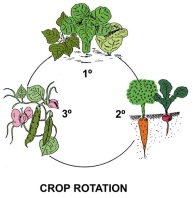Since the dawn of agriculture, people have exercised great ingenuity to pump more nitrogen into crop fields. Farmers have planted legumes and plowed the entire crop under, strewn night soil or manure on the fields, shipped in bat dung from islands in the Pacific or saltpeter from Chilean mines and plowed in glistening granules of synthetic fertilizer made in chemical plants.
No wonder biologist Himadri Pakrasi’s team is excited by the project they are undertaking. If they succeed, the chemical apparatus for nitrogen fixation will be miniaturized, automated and relocated within the plant so nitrogen is available when and where it is needed — and only then and there.
“That would really revolutionize agriculture,” said Pakrasi, PhD, the Myron and Sonya Glassberg/Albert and Blanche Greensfelder Distinguished University Professor in Arts & Sciences and director of the International Center for Advanced Renewable Energy and Sustainability (I-CARES) at Washington University in St. Louis.
Engineering with biological parts
Although there is plenty of nitrogen in the atmosphere, atmospheric nitrogen is not in a form plants can use. Atmospheric nitrogen must be “fixed,” or converted into compounds that make the nitrogen available to plants.
Much of modern agriculture relies on biologically available nitrogenous compounds made by an industrial process, developed by German chemist Fritz Haber in 1909. The importance of the Haber-Bosch process, as it eventually was called, can hardly be overstated; today, the fertilizer it produces allows us to feed a population roughly a third larger than the planet could sustain without synthetic fertilizer.
On the other hand, the Haber-Bosch process is energy-intensive, and the reactive nitrogen released into the atmosphere and water as runoff from agricultural fields causes a host of problems, including respiratory illness, cancer and cardiac disease.
Pakrasi thinks it should be possible to design a better nitrogen-fixing system. His idea is to put the apparatus for fixing nitrogen into plant cells, the same cells that hold the apparatus for capturing the energy in sunlight.
The National Science Foundation just awarded Pakrasi and his team more than $3.87 million to explore this idea further. The grant will be administered out of I-CARES, a university-wide center that supports collaborative research regionally, nationally, and internationally in the areas of energy, the environment and sustainability.
This award is one of four funded by the National Science Foundation jointly with awards funded by the Biotechnology and Biological Sciences Research Council in the United Kingdom. The teams will collaborate with one another and meet regularly to share progress and successes.
A proof of principle
As a proof of principle, Pakrasi and his colleagues plan to develop the synthetic biology tools needed to excise the nitrogen fixation system in one species of cyanobacterium (a phylum of green bacteria formerly considered to be algae) and paste it into a second cyanobacterium that does not fix nitrogen.
The team includes: Tae Seok Moon, PhD, and Fuzhong Zhang, PhD, both assistant professors of energy, environmental and chemical engineering in the School of Engineering & Applied Science at Washington University; and Costas D. Maranas, the Donald B. Broughton Professor of Chemical Engineering at Pennsylvania State University.
“Ultimately what we want to do is take this entire nitrogen-fixation apparatus — which evolved once and only once — and put it in plants,” Pakrasi said. “Because of the energy requirements of nitrogen fixation, we want to put it in chloroplasts, because that’s where the energy-storing ATP molecules are produced.” In effect, the goal is to convert all crop plants, not just the legumes, into nitrogen fixers.





